Tying a Good Fishing Knot
How do I make my bait stronger to catch bigger and more fish? Anglers know one good answer to this question: the best fishing knots.
There are many kinds of fishing knots, and each one has a specific use. You need to know the best type of knot depending on the lure or bait you want to use and the kind of fish you wish to catch.
Check out the best knots for every fishing activity in this informative guide.
Listen to more knot tying tips on the Cast & Spear Podcast
Why Use Fishing Knots
Knots connect the lure or bait from the fishing line. If your knot fails, you will lose your bait or lose the fish you caught.
Different knots can make a loop-to-loop connection and improve line strength. These also create a strong knot and create loops out of different types of lines. Such knots considered the strongest fishing knot types are the:
- Arbor knot
- Albright knot
- Snell knot
- Duncan knot
- Bimini twist
- Classic single overhand knot.
Insider Advice: Different situations require different types of knots. Tying a fishing line to a baited hook is entirely different from the one that joins two line sections.
The All-Time Best Fishing Knots
Some types of fishing knots are tried and tested variations passed down from angler to angler. Here are four basic ones that you should always keep in your arsenal.
Palomar Knot
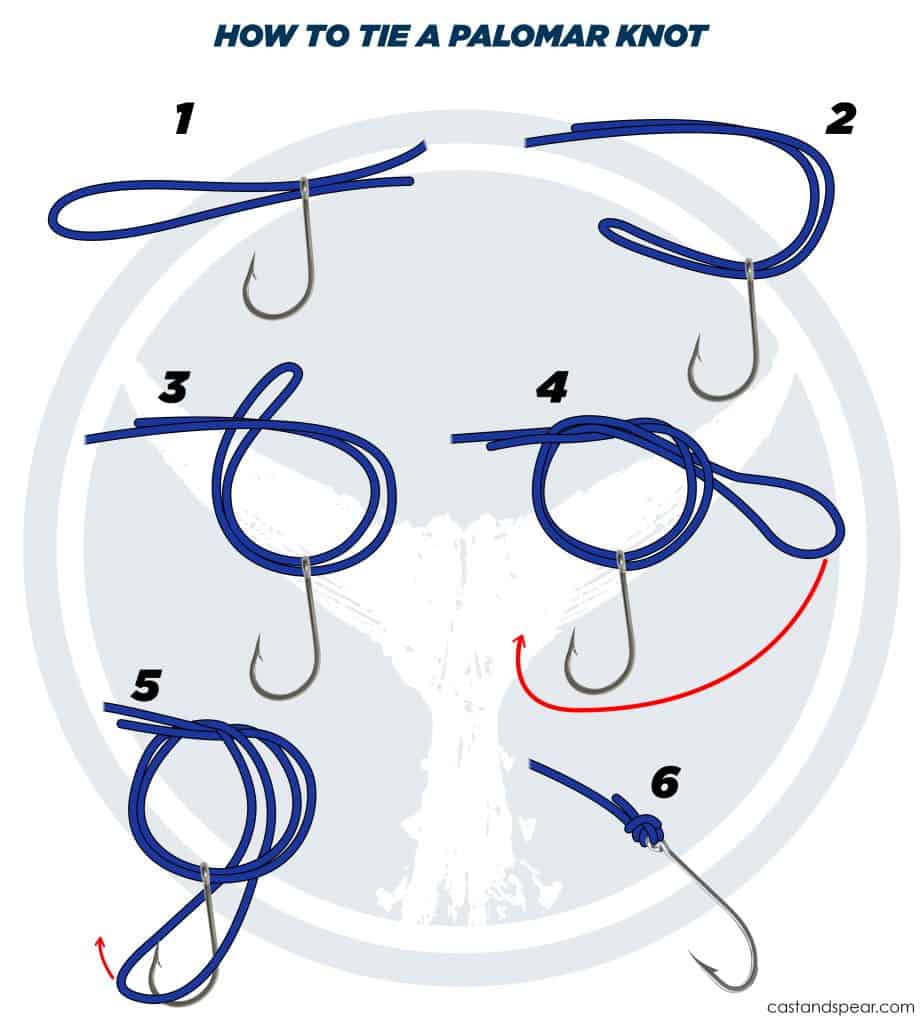
This is the most popular fishing knot because it's effortless to do. The Palomar Knot is also the strongest and is best for attaching a hook to a braided line.
Popular Science has tested a Palomar Knot. They revealed that this type is the strongest at 96% when using a super line to a mono filament fishing line.
- Double the line for 6 inches and move it into the eye of the hook.
- Create an overhand knot on the double fishing line and let the hook loosely hang from it.
- Pull-on the end of the loop and pass this over the hook.
- Moisten your fishing line. Pull the ends to draw the knot. Cut or trim any excess string. You now have a Palomar knot.
Rapala Knot
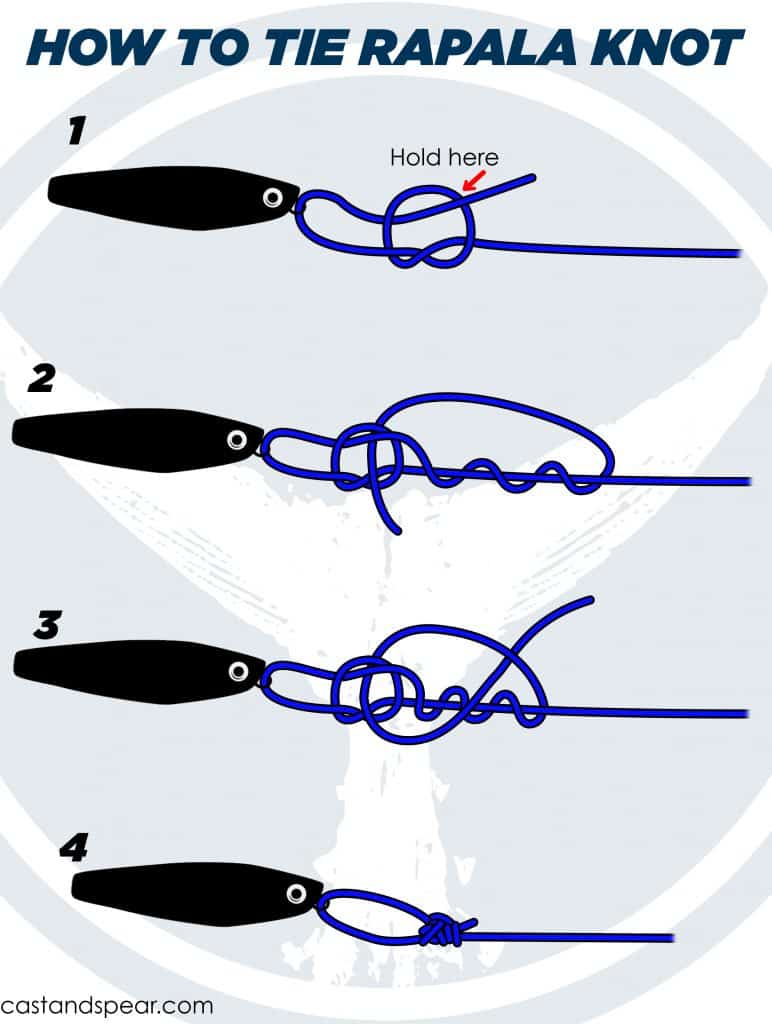
This type is a good one for connecting lures for fluorocarbon fishing lines. Rapala is the company that came up with this efficient and easy knot.
- Create an overhand knot at about 5 to 6 inches from the end of the line.
- Move the tag tip into the eye of the hook or lure and afterward into your overhand knot.
- Wind the standing line about three times and then push the tag end into the back of the overhand knot.
- Move the tag tip into the loop you created earlier. Then, pull the mainline, the tag tip, and the lure or hook to tighten the Rapala knot.
Fisherman's Knot
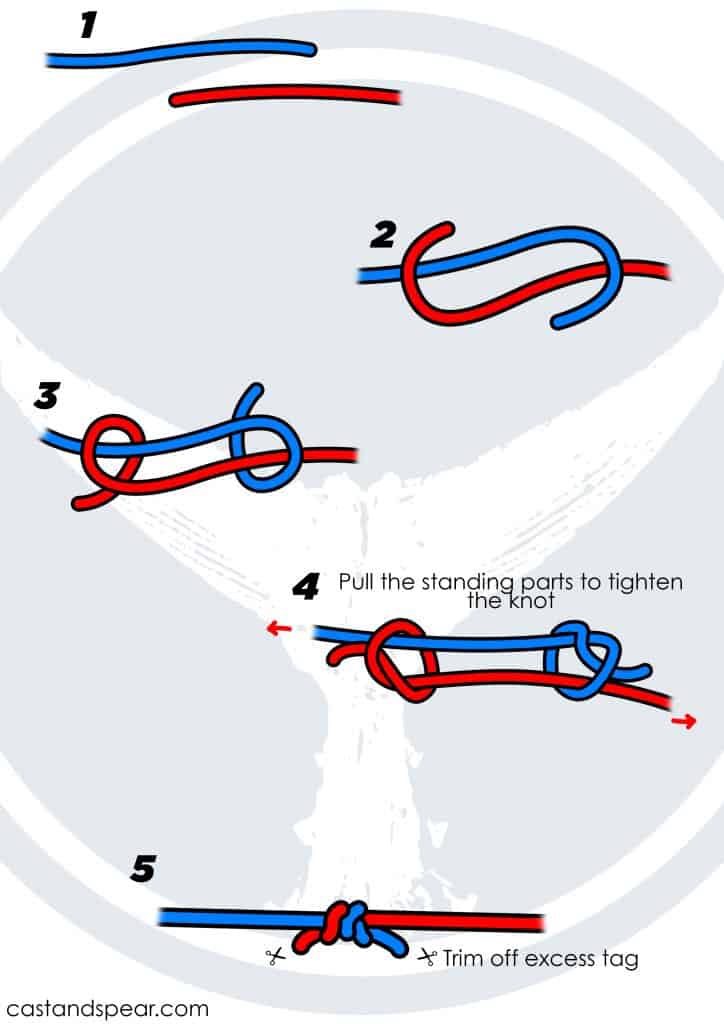
This is used if you want to tie two kinds of ropes of the same diameter. This knot isn't recommended for joining fishing lines together but is useful to know.
- Tie an overhand knot using the end of a rope to another rope.
- Do this with the end of the other rope and tighten the two knots.
- Pull on the standing sections of the two ropes from the opposite sides to secure the two knots.
Surgeon's Knot
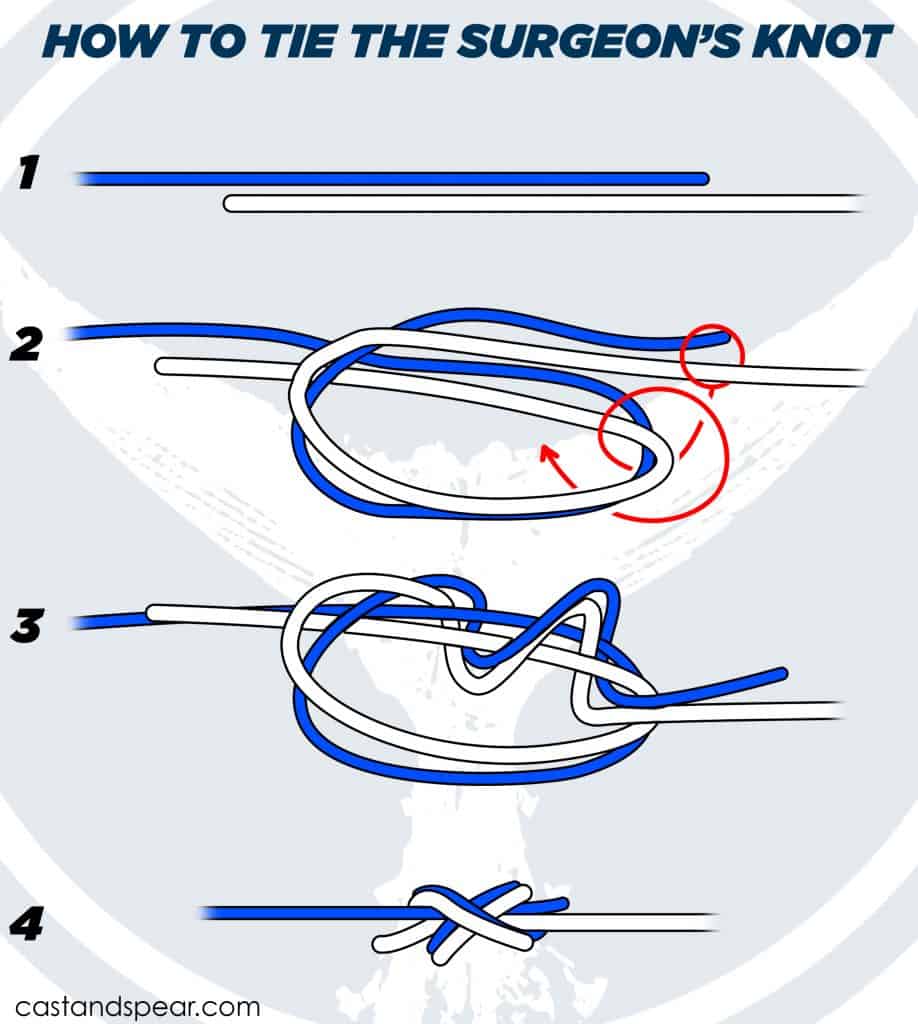
This is the easiest single knot when connecting two monofilament lines with different weights. It is one of the strongest knots to use for different demanding situations.
- Place the leader fishing line and the primary line side by side.
- Tie an overhand-type knot. Push the leader of the mainline and the long piece into the loop.
- Tie another overhand knot. Move the previous line ends into the loop.
- Moisten the line. Tighten the knot slowly.
- When the knot is tight, trim the tags.
Hangman's Knot (Uni Knot)
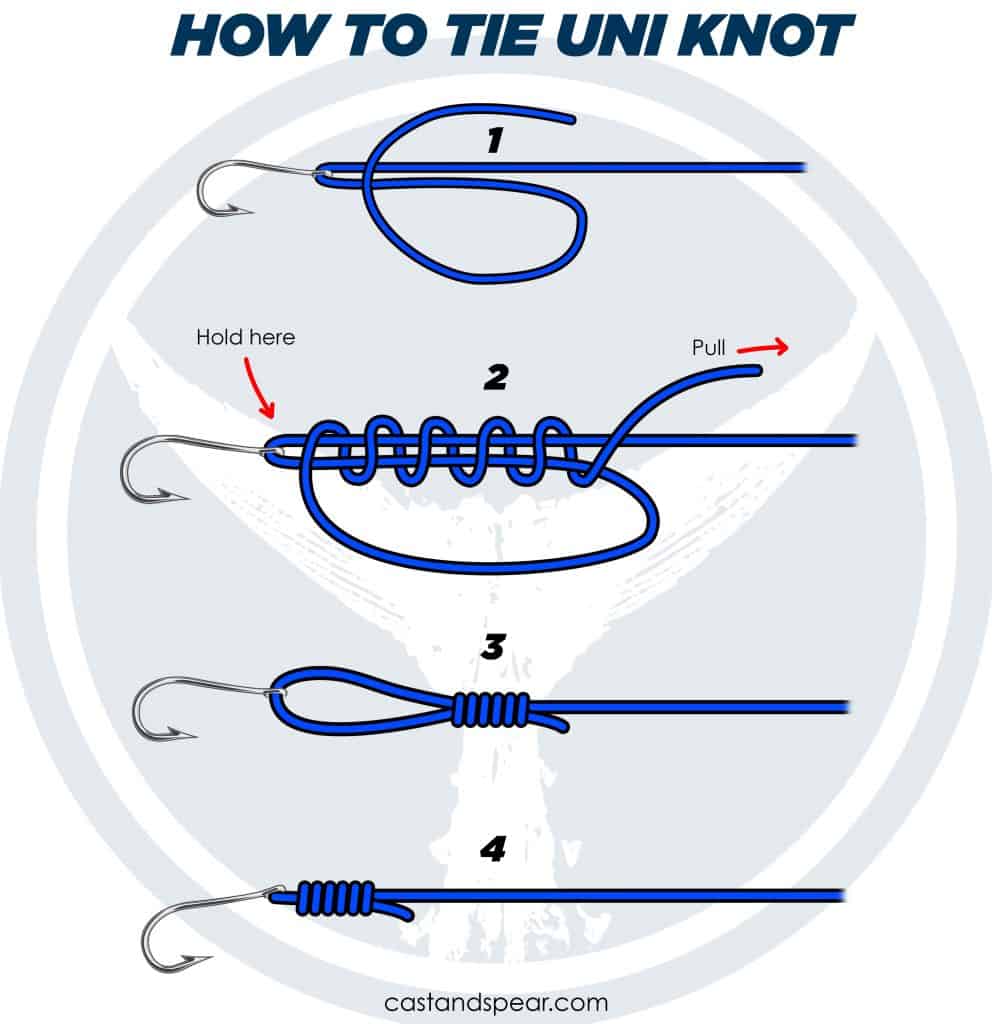
This is ideal for monofilament lines and terminal tackle. It is a simple but versatile type of knot that even a beginner can do. You can easily attach your line to the reel using a hangman's knot. This knot is comparable to the Arbor knot.
- Run the mainline into the eye, do this two times (same direction) to create a circle.
- Use the tag end and wrap it all around the double lines about six times.
- Pull the fishing line into the loop.
- Moisten this line and take the mainline and pull to tighten it.
- Complete the hangman's knot by pulling on the mainline to move the knot downwards to the swivel or hook's eye.
Insider Advice: Moisten your knot before tightening them. This will help keep the line in good shape and easier to pull even when connected to a heavier load.
The Best Fishing Loop Knots
These knots have open loops sections so you can tie a line to the end of a rig. You can use a loop knot to create interconnecting sections to attach different tackle parts.
Improved Clinch Knot
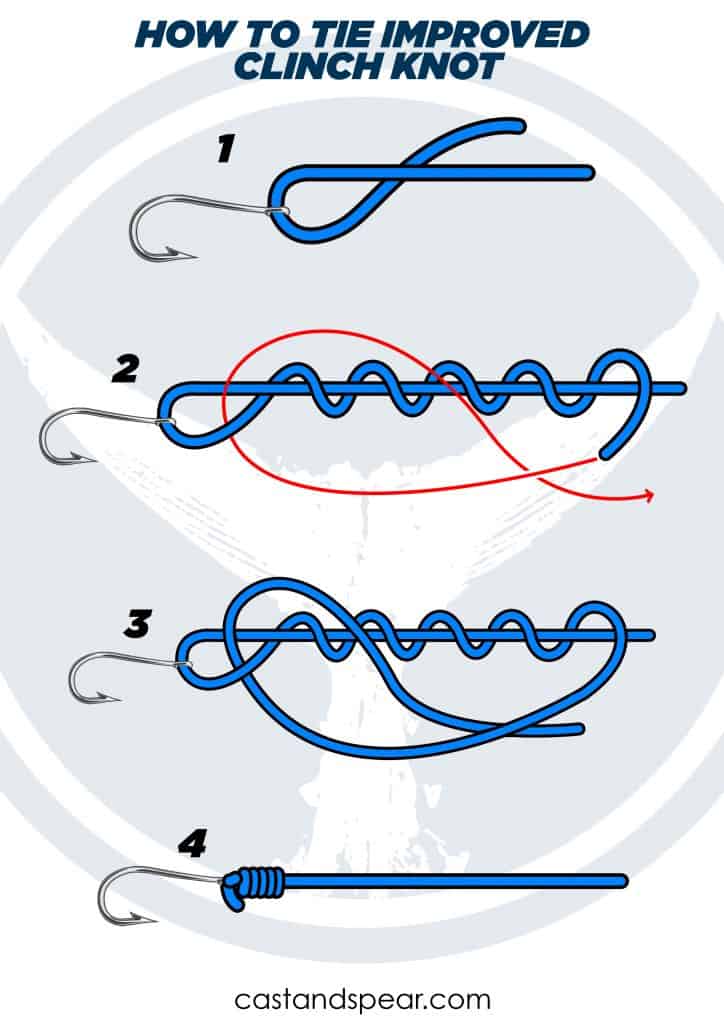
An improved clinch knot is a time-tested knot that's great for monofilament lines. A clinch knot is easy to tie and very reliable, especially for catching big fish. This is comparable to the Bimini twist.
- Pass the end of the fishing line into the hook eye.
- Double back the line to create 5 turns on the standing line.
- Take the end of your line to the first loop created at the back of the eye and to the large loop.
- Moisten the knot and pull on it so you can tighten the coil. Clip the tag ends.
Figure-Eight Fishing Loop
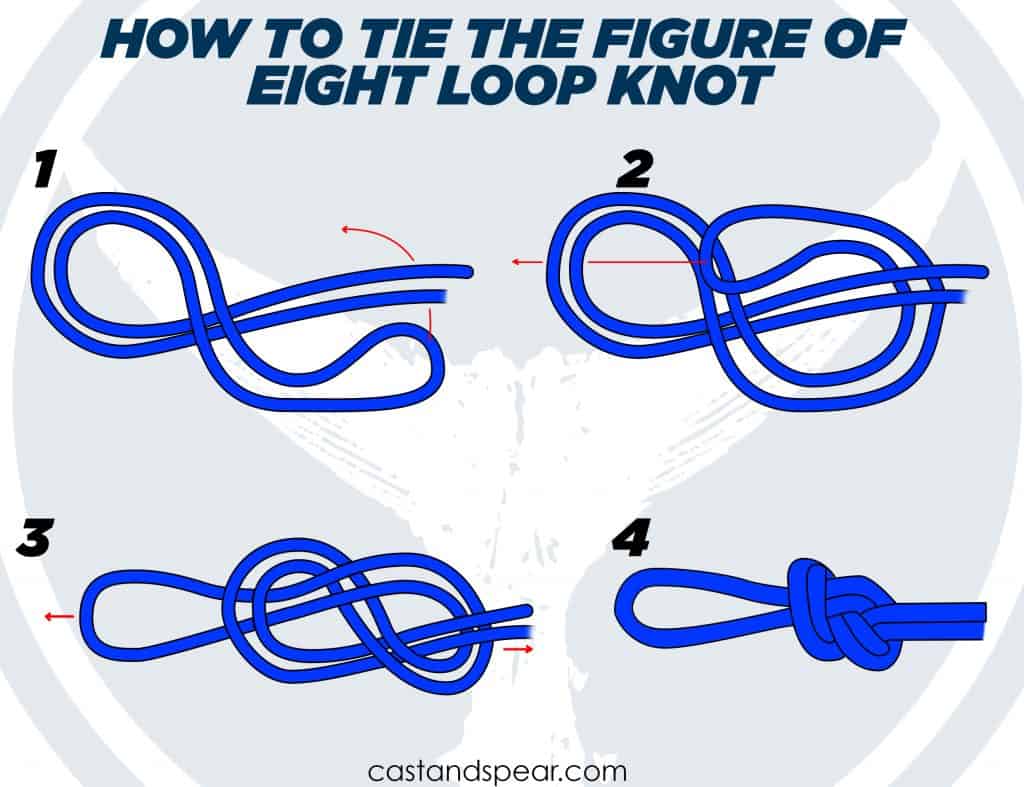
Figure 8 is easy to make and is popularly used for multi-hook lines. You may tie a figure 8 in the middle of the line to connect a hook to a rig.
- Double the line and make a loop around about six inches.
- Tie a second loop. Take the first loop under your standing lines.
- Get the first loop and wrap this around the standing line. Take this into the 2nd loop.
- Pull both ends to tighten the knot. Trim the line's tag tip, including the outer wraps.
The Most Widely-Used Braided Fishing Line Knots
A braided fishing line is the hardest to tie. However, these knots make it easier and more efficient to use braided lines.
Double Uni-Knot
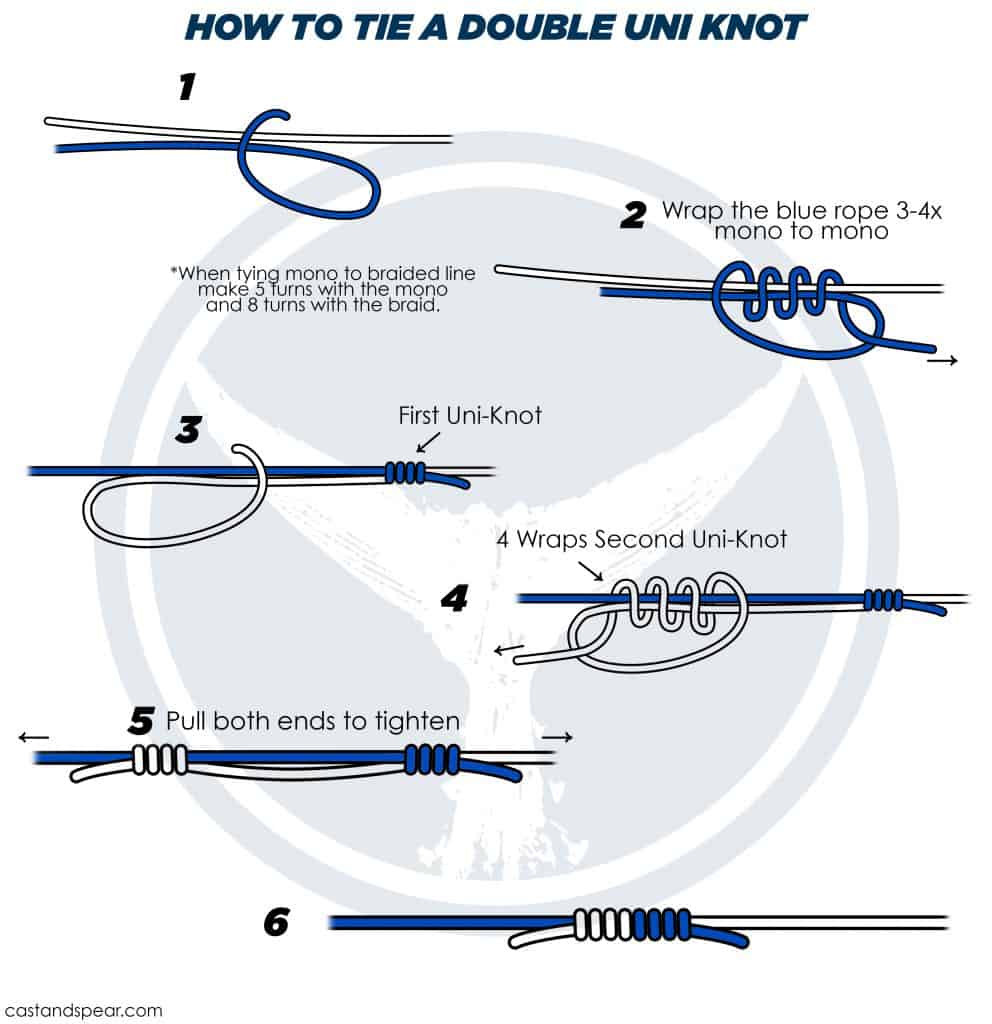
The double uni-knot is dependable and easy to do. The uni knot is used in braided lines to keep the braided mainline secure and ready to catch big fish.
- Take the ends of the lines and overlap them.
- Hold the tag tip of these lines from your left and double this back to wrap it around the two lines four times. Move the tag through the loop you created.
- Repeat these steps using the end of the line on your left. The number of times of wraps should be the same.
- Pull standing lines from opposite sides to allow the knots to slide together.
- Trim your line ends. You now have a uni knot.
Snell Knot
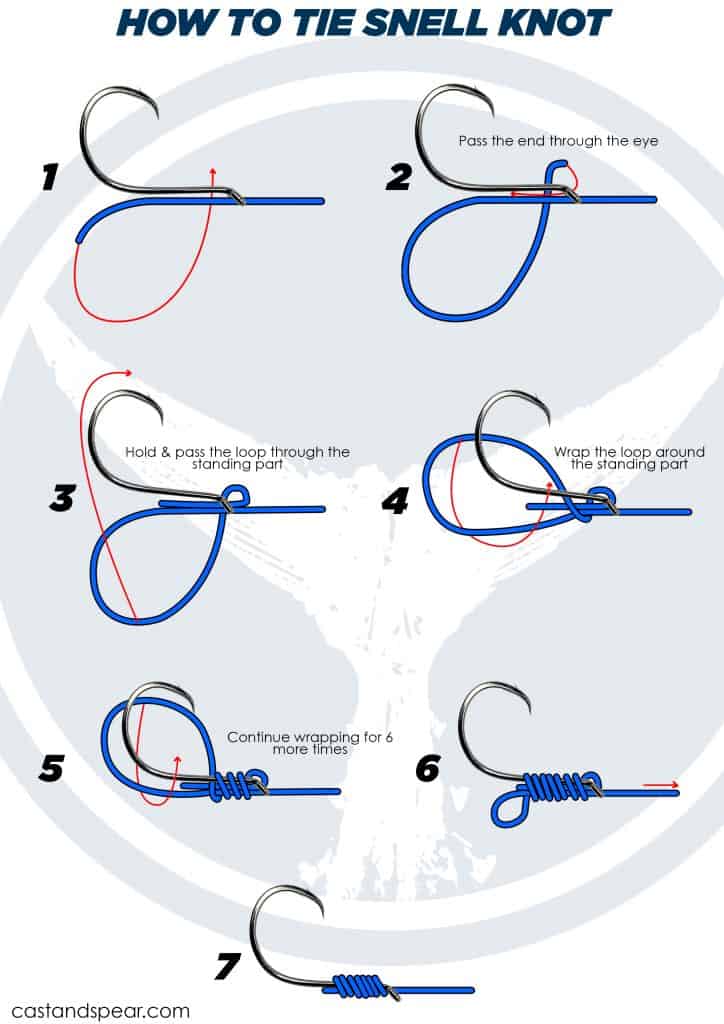
This is the best knot to connect a leader or a tippet to a hook. It is a terminal fishing knot that's strong and can evenly distribute friction.
- Move the tag tip into the eye of your hook towards its point.
- Create a small loop and take the tag tip at the back of the hook's shank.
- Move the tag tip around your hook shank and the line.
- Create up to 7 wraps and take the tag tip into the loop.
- Pull the tag plus the standing ends so you can tighten the knot. Trim your tag tip.
Blood Knot
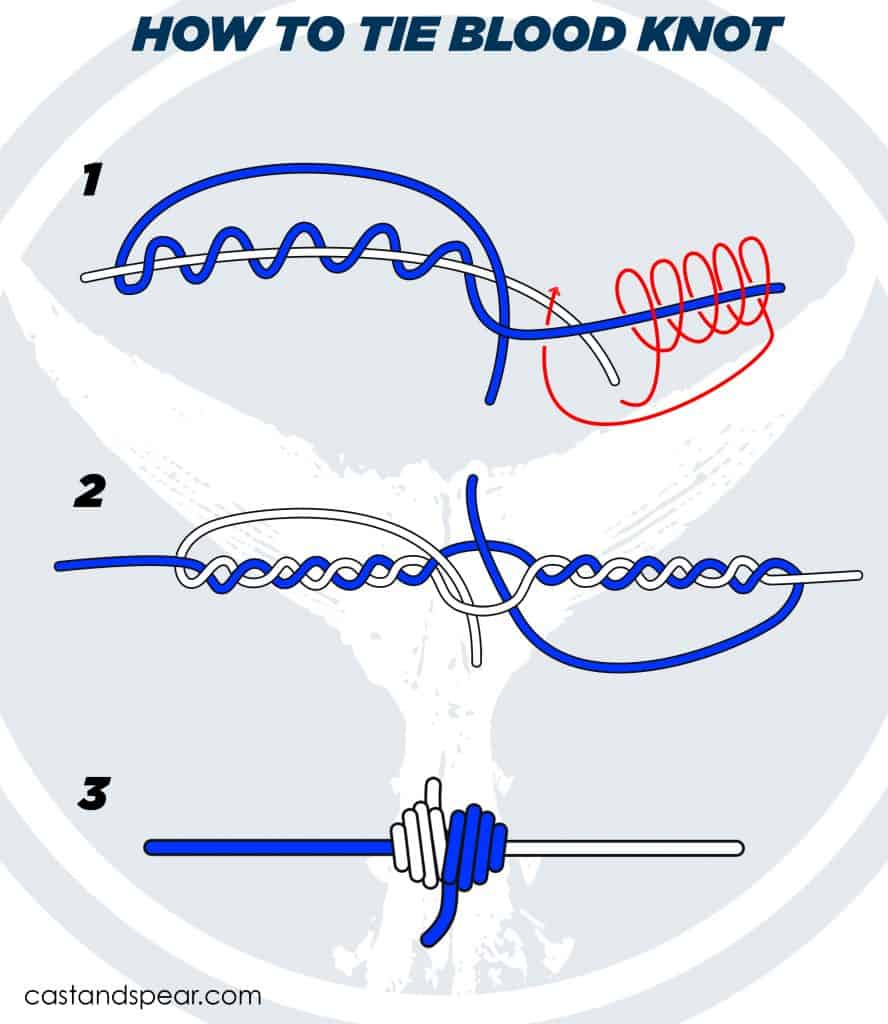
The blood knot connects lines of varying diameters. If you're fly fishing, a blood knot can efficiently attach your tippet to the leader line.
- Double the line about four inches and move it on top of the heavier line. The tag end is about 4 inches.
- Move the double line around the heavy line about 3 times.
- Take the doubled line loop to where it first crossed the heavy line. Place this under the heavy line.
- Wrap the heavy line about 3 times around the doubled line's standing end.
- Move the tag tip of your heavy line into the opening that the tag tip went into; however, this is the other direction.
- Now pull the standing ends so you can tighten the knot.
Final Thoughts
Getting to know the best fishing knots and slip knots will give you an advantage as you fish in challenging waters. Remember, practice makes perfect. Try to tie these knots at home so you'll be more than ready when you're in the water.
Listen to more knot tying tips on the Cast & Spear Podcast
The Anglers Behind This Article:

Jon Stenstrom
Founder
Yes No
Source: https://castandspear.com/fishing-knots/